Climate Change
What’s Happening & Why
 Thousands of studies conducted by researchers around the world have documented increase in temperature at Earth’s surface, as well as in the atmosphere and oceans. Many other aspects of global climate are changing as well. High temperature extremes and heavy precipitation events are increasing, glaciers and snow cover are shrinking, and sea ice is retreating. Seas are warming, rising, and becoming more acidic, and flooding is become more frequent along. Growing seasons are longer, and large wildfires occur more frequently. Many species are moving to new locations, and changes in the seasonal timing of important biological events are occurring in response to climate change.
Thousands of studies conducted by researchers around the world have documented increase in temperature at Earth’s surface, as well as in the atmosphere and oceans. Many other aspects of global climate are changing as well. High temperature extremes and heavy precipitation events are increasing, glaciers and snow cover are shrinking, and sea ice is retreating. Seas are warming, rising, and becoming more acidic, and flooding is become more frequent along. Growing seasons are longer, and large wildfires occur more frequently. Many species are moving to new locations, and changes in the seasonal timing of important biological events are occurring in response to climate change.
These trends are all consistent with a warming world and are expected to continue. Many lines of evidence demonstrate that human activities, especially emissions of heat-trapping greenhouse gases from fossil fuel combustion, deforestation, and land-use change, are primarily responsible for the climate changes observed in the industrial era, especially over the last six decades. The atmospheric concentration of carbon dioxide, the largest contributor to human-caused warming, has increased by about 40% over the industrial era. This change has intensified the natural greenhouse effect, driving an increase in global surface temperatures and other widespread changes in Earth’s climate that are unprecedented in the history of modern civilization.
Greenhouse gas emissions from human activities will continue to affect Earth’s climate for decades and even centuries. Humans are adding carbon dioxide to the atmosphere at a rate far greater than it is removed by natural processes, creating a long-lived reservoir of the gas in the atmosphere and oceans that is driving the climate to a warmer and warmer state.
Beyond the next few decades, how much the climate changes will depend primarily on the amount of greenhouse gases emitted into the atmosphere; how much of those greenhouse gases are absorbed by the ocean, the biosphere, and other sinks; and how sensitive Earth’s climate is to those emissions.
To learn more about the science of climate change, explore:
- NCA4 Volume I, Climate Science Special Report
- NCA4 Volume II, Ch.2: Our Changing Climate
- USGCRP Indicators
Impact of Climate Change on the Society
 Climate change has a far reaching impact on people. Impacts related to climate change are evident across regions and in many sectors important to society—such as human health, agriculture and food security, water supply, transportation, energy, ecosystems, and others—and are expected to become increasingly disruptive throughout this century and beyond.
Climate change has a far reaching impact on people. Impacts related to climate change are evident across regions and in many sectors important to society—such as human health, agriculture and food security, water supply, transportation, energy, ecosystems, and others—and are expected to become increasingly disruptive throughout this century and beyond.
Response Options
Actions to prepare for and adjust to changing climate conditions—thereby reducing negative impacts or taking advantage of new opportunities—are known as adaptation. The other major category of response options—known as mitigation—involves efforts to reduce the amount and speed of future climate change by limiting emissions or removing carbon dioxide from the atmosphere. Adaptation and mitigation actions are linked in multiple ways and can be considered complementary strategies—mitigation efforts can reduce future risks, while adaptation can minimize the consequences of changes that are already happening as a result of past and present emissions.
Explore Federal data and information resources:
- Find Federal data and tools to help communities prepare for climate change
- Find resources to help Federal agencies adapt to climate change
Top 10 Solutions to stop Climate Change
The enormity of global warming can be daunting and dispiriting. What can one person, or even one nation, do on their own to slow and reverse climate change? But just as ecologist Stephen Pacala and physicist Robert Socolow, both at Princeton University, came up with 15 so-called "wedges" for nations to utilize toward this goal—each of which is challenging but feasible and, in some combination, could reduce greenhouse gas emissions to safer levels—there are personal lifestyle changes that you can make too that, in some combination, can help reduce your carbon impact. Not all are right for everybody. Some you may already be doing or absolutely abhor. But implementing just a few of them could make a difference.
Forego Fossil Fuels —
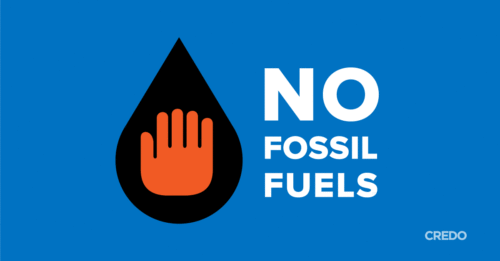 The first challenge is eliminating the burning of coal, oil and, eventually, natural gas. This is perhaps the most daunting challenge as denizens of richer nations literally eat, wear, work, play and even sleep on the products made from such fossilized sunshine. And citizens of developing nations want and arguably deserve the same comforts, which are largely thanks to the energy stored in such fuels.
The first challenge is eliminating the burning of coal, oil and, eventually, natural gas. This is perhaps the most daunting challenge as denizens of richer nations literally eat, wear, work, play and even sleep on the products made from such fossilized sunshine. And citizens of developing nations want and arguably deserve the same comforts, which are largely thanks to the energy stored in such fuels.
Oil is the lubricant of the global economy, hidden inside such ubiquitous items as plastic and corn, and fundamental to the transportation of both consumers and goods. Coal is the substrate, supplying roughly half of the electricity used in the U.S. and nearly that much worldwide—a percentage that is likely to grow, according to the International Energy Agency. There are no perfect solutions for reducing dependence on fossil fuels (for example, carbon neutral biofuels can drive up the price of food and lead to forest destruction, and while nuclear power does not emit greenhouse gases, it does produce radioactive waste), but every bit counts.
So try to employ alternatives when possible—plant-derived plastics, biodiesel, wind power—and to invest in the change, be it by divesting from oil stocks or investing in companies practicing carbon capture and storage.
Infrastructure Upgrade —
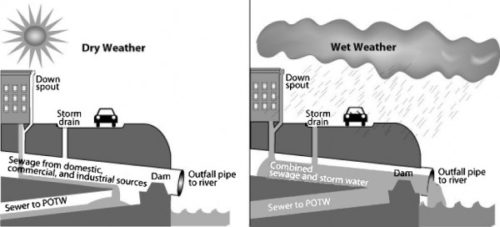 Buildings worldwide contribute around one third of all greenhouse gas emissions (43 percent in the U.S. alone), even though investing in thicker insulation and other cost-effective, temperature-regulating steps can save money in the long run. Electric grids are at capacity or overloaded, but power demands continue to rise. And bad roads can lower the fuel economy of even the most efficient vehicle. Investing in new infrastructure, or radically upgrading existing highways and transmission lines, would help cut greenhouse gas emissions and drive economic growth in developing countries.
Buildings worldwide contribute around one third of all greenhouse gas emissions (43 percent in the U.S. alone), even though investing in thicker insulation and other cost-effective, temperature-regulating steps can save money in the long run. Electric grids are at capacity or overloaded, but power demands continue to rise. And bad roads can lower the fuel economy of even the most efficient vehicle. Investing in new infrastructure, or radically upgrading existing highways and transmission lines, would help cut greenhouse gas emissions and drive economic growth in developing countries.
Of course, it takes a lot of cement, a major source of greenhouse gas emissions, to construct new buildings and roads. The U.S. alone contributed 50.7 million metric tons of carbon dioxide to the atmosphere in 2005 from cement production, which requires heating limestone and other ingredients to 1,450 degrees Celsius (2,642 degrees Fahrenheit). Mining copper and other elements needed for electrical wiring and transmission also causes globe-warming pollution.
But energy-efficient buildings and improved cement-making processes (such as using alternative fuels to fire up the kiln) could reduce greenhouse gas emissions in the developed world and prevent them in the developing world.
Move Closer to Work —
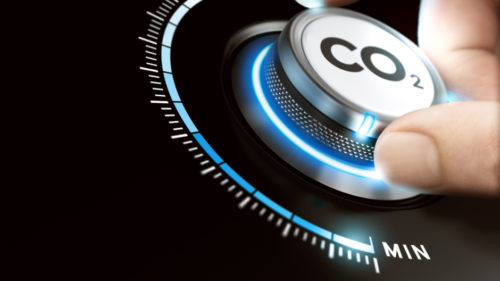 Transportation is the second leading source of greenhouse gas emissions in the U.S. (burning a single gallon of gasoline produces 20 pounds of CO2). But it doesn't have to be that way.
Transportation is the second leading source of greenhouse gas emissions in the U.S. (burning a single gallon of gasoline produces 20 pounds of CO2). But it doesn't have to be that way.
One way to dramatically curtail transportation fuel needs is to move closer to work, use mass transit, or switch to walking, cycling or some other mode of transport that does not require anything other than human energy. There is also the option of working from home and telecommuting several days a week.
Cutting down on long-distance travel would also help, most notably airplane flights, which are one of the fastest growing sources of greenhouse gas emissions and a source that arguably releases such emissions in the worst possible spot (higher in the atmosphere). Flights are also one of the few sources of globe-warming pollution for which there isn't already a viable alternative: jets rely on kerosene, because it packs the most energy per pound, allowing them to travel far and fast, yet it takes roughly 10 gallons of oil to make one gallon of JetA fuel. Restricting flying to only critical, long-distance trips—in many parts of the world, trains can replace planes for short- to medium-distance trips—would help curb airplane emissions.
Consume Less —
The easiest way to cut back on greenhouse gas emissions is simply to buy less stuff. Whether by forgoing an automobile or employing a reusable grocery sack, cutting back on consumption results in fewer fossil fuels being burned to extract, produce and ship products around the globe.
Think green when making purchases. For instance, if you are in the market for a new car, buy one that will last the longest and have the least impact on the environment. Thus, a used vehicle with a hybrid engine offers superior fuel efficiency over the long haul while saving the environmental impact of new car manufacture.
Paradoxically, when purchasing essentials, such as groceries, buying in bulk can reduce the amount of packaging—plastic wrapping, cardboard boxes and other unnecessary materials. Sometimes buying more means consuming less.
Be Efficient —
A potentially simpler and even bigger impact can be made by doing more with less. Citizens of many developed countries are profligate wasters of energy, whether by speeding in a gas-guzzling sport-utility vehicle or leaving the lights on when not in a room.
Good driving—and good car maintenance, such as making sure tires are properly inflated—can limit the amount of greenhouse gas emissions from a vehicle and, perhaps more importantly, lower the frequency of payment at the pump.
Similarly, employing more efficient refrigerators, air conditioners and other appliances, such as those rated highly under the U.S. Environmental Protection Agency's Energy Star program, can cut electric bills while something as simple as weatherproofing the windows of a home can reduce heating and cooling bills. Such efforts can also be usefully employed at work, whether that means installing more efficient turbines at the power plant or turning the lights off when you leave the office.
Eat Smart, Go Vegetarian?—
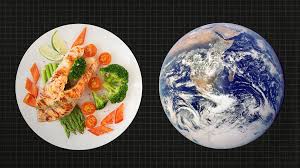 Corn grown in the U.S. requires barrels of oil for the fertilizer to grow it and the diesel fuel to harvest and transport it. Some grocery stores stock organic produce that do not require such fertilizers, but it is often shipped from halfway across the globe. And meat, whether beef, chicken or pork, requires pounds of feed to produce a pound of protein.
Corn grown in the U.S. requires barrels of oil for the fertilizer to grow it and the diesel fuel to harvest and transport it. Some grocery stores stock organic produce that do not require such fertilizers, but it is often shipped from halfway across the globe. And meat, whether beef, chicken or pork, requires pounds of feed to produce a pound of protein.
Choosing food items that balance nutrition, taste and ecological impact is no easy task. Foodstuffs often bear some nutritional information, but there is little to reveal how far a head of lettuce, for example, has traveled.
University of Chicago researchers estimate that each meat-eating American produces 1.5 tons more greenhouse gases through their food choice than do their vegetarian peers. It would also take far less land to grow the crops necessary to feed humans than livestock, allowing more room for planting trees.
Stop Cutting Down Trees —
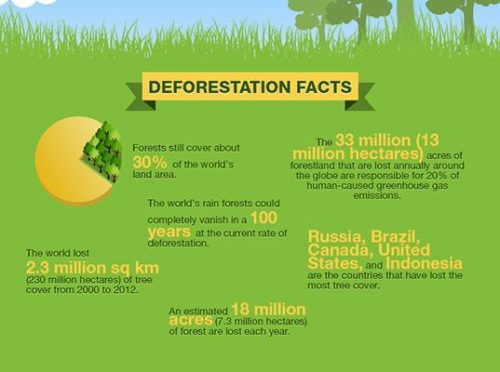 Every year, 33 million acres of forests are cut down. Timber harvesting in the tropics alone contributes 1.5 billion metric tons of carbon to the atmosphere. That represents 20 percent of human-made greenhouse gas emissions and a source that could be avoided relatively easily.
Every year, 33 million acres of forests are cut down. Timber harvesting in the tropics alone contributes 1.5 billion metric tons of carbon to the atmosphere. That represents 20 percent of human-made greenhouse gas emissions and a source that could be avoided relatively easily.
Improved agricultural practices along with paper recycling and forest management—balancing the amount of wood taken out with the amount of new trees growing—could quickly eliminate this significant chunk of emissions.
And when purchasing wood products, such as furniture or flooring, buy used goods or, failing that, wood certified to have been sustainably harvested. The Amazon and other forests are not just the lungs of the earth, they may also be humanity's best short-term hope for limiting climate change.
Unplug —

Believe it or not, U.S. citizens spend more money on electricity to power devices when off than when on. Televisions, stereo equipment, computers, battery chargers and a host of other gadgets and appliances consume more energy when seemingly switched off, so unplug them instead.
Purchasing energy-efficient gadgets can also save both energy and money—and thus prevent more greenhouse gas emissions. To take but one example, efficient battery chargers could save more than one billion kilowatt-hours of electricity—$100 million at today's electricity prices—and thus prevent the release of more than one million metric tons of greenhouse gases.
Swapping old incandescent lightbulbs for more efficient replacements, such as compact fluorescents (warning: these lightbulbs contain mercury and must be properly disposed of at the end of their long life), would save billions of kilowatt-hours. In fact, according to the EPA, replacing just one incandescent lightbulb in every American home would save enough energy to provide electricity to three million American homes.
Population Control —
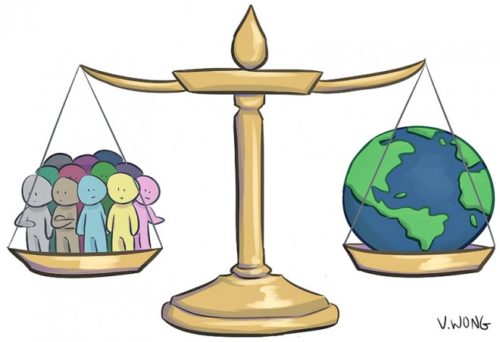 There are at least 6.6 billion people living today, a number that is predicted by the United Nations to grow to at least nine billion by mid-century. The U.N. Environmental Program estimates that it requires 54 acres to sustain an average human being today—food, clothing and other resources extracted from the planet. Continuing such population growth seems unsustainable.
There are at least 6.6 billion people living today, a number that is predicted by the United Nations to grow to at least nine billion by mid-century. The U.N. Environmental Program estimates that it requires 54 acres to sustain an average human being today—food, clothing and other resources extracted from the planet. Continuing such population growth seems unsustainable.
Falling birth rates in some developed and developing countries (a significant portion of which are due to government-imposed limits on the number of children a couple can have) have begun to reduce or reverse the population explosion. It remains unclear how many people the planet can comfortably sustain, but it is clear that per capita energy consumption must go down if climate change is to be controlled.
Ultimately, a one child per couple rule is not sustainable either and there is no perfect number for human population. But it is clear that more humans means more greenhouse gas emissions.
Future Fuels —
 Replacing fossil fuels may prove the great challenge of the 21st century. Many contenders exist, ranging from ethanol derived from crops to hydrogen electrolyzed out of water, but all of them have some drawbacks, too, and none are immediately available at the scale needed.
Replacing fossil fuels may prove the great challenge of the 21st century. Many contenders exist, ranging from ethanol derived from crops to hydrogen electrolyzed out of water, but all of them have some drawbacks, too, and none are immediately available at the scale needed.
Biofuels can have a host of negative impacts, from driving up food prices to sucking up more energy than they produce. Hydrogen must be created, requiring either reforming natural gas or electricity to crack water molecules. Biodiesel hybrid electric vehicles (that can plug into the grid overnight) may offer the best transportation solution in the short term, given the energy density of diesel and the carbon neutral ramifications of fuel from plants as well as the emissions of electric engines. A recent study found that the present amount of electricity generation in the U.S. could provide enough energy for the country's entire fleet of automobiles to switch to plug-in hybrids, reducing greenhouse gas emissions in the process.
But plug-in hybrids would still rely on electricity, now predominantly generated by burning dirty coal. Massive investment in low-emission energy generation, whether solar-thermal power or nuclear fission, would be required to radically reduce greenhouse gas emissions. And even more speculative energy sources—hyperefficient photovoltaic cells, solar energy stations in orbit or even fusion—may ultimately be required.
The solutions above offer the outline of a plan to personally avoid contributing to global warming. But should such individual and national efforts fail, there is another, potentially desperate solution:
Experiment Earth —
 Climate change represents humanity's first planetwide experiment. But, if all else fails, it may not be the last. So-called geoengineering, radical interventions to either block sunlight or reduce greenhouse gases, is a potential last resort for addressing the challenge of climate change.
Climate change represents humanity's first planetwide experiment. But, if all else fails, it may not be the last. So-called geoengineering, radical interventions to either block sunlight or reduce greenhouse gases, is a potential last resort for addressing the challenge of climate change.
Among the ideas: releasing sulfate particles in the air to mimic the cooling effects of a massive volcanic eruption; placing millions of small mirrors or lenses in space to deflect sunlight; covering portions of the planet with reflective films to bounce sunlight back into space; fertilizing the oceans with iron or other nutrients to enable plankton to absorb more carbon; and increasing cloud cover or the reflectivity of clouds that already form.
All may have unintended consequences, making the solution worse than the original problem. But it is clear that at least some form of geoengineering will likely be required: capturing carbon dioxide before it is released and storing it in some fashion, either deep beneath the earth, at the bottom of the ocean or in carbonate minerals. Such carbon capture and storage is critical to any serious effort to combat climate change.






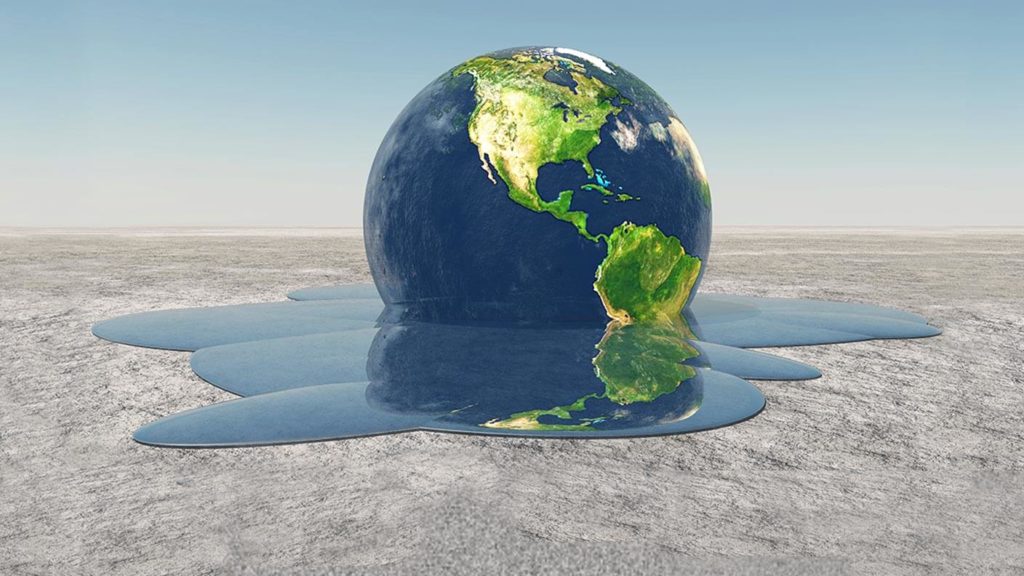

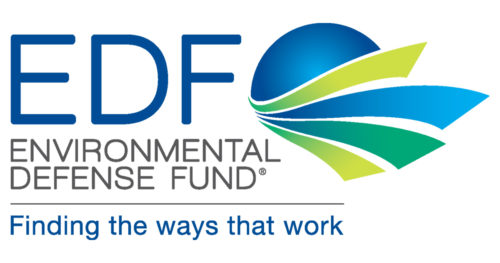










Leave a Reply